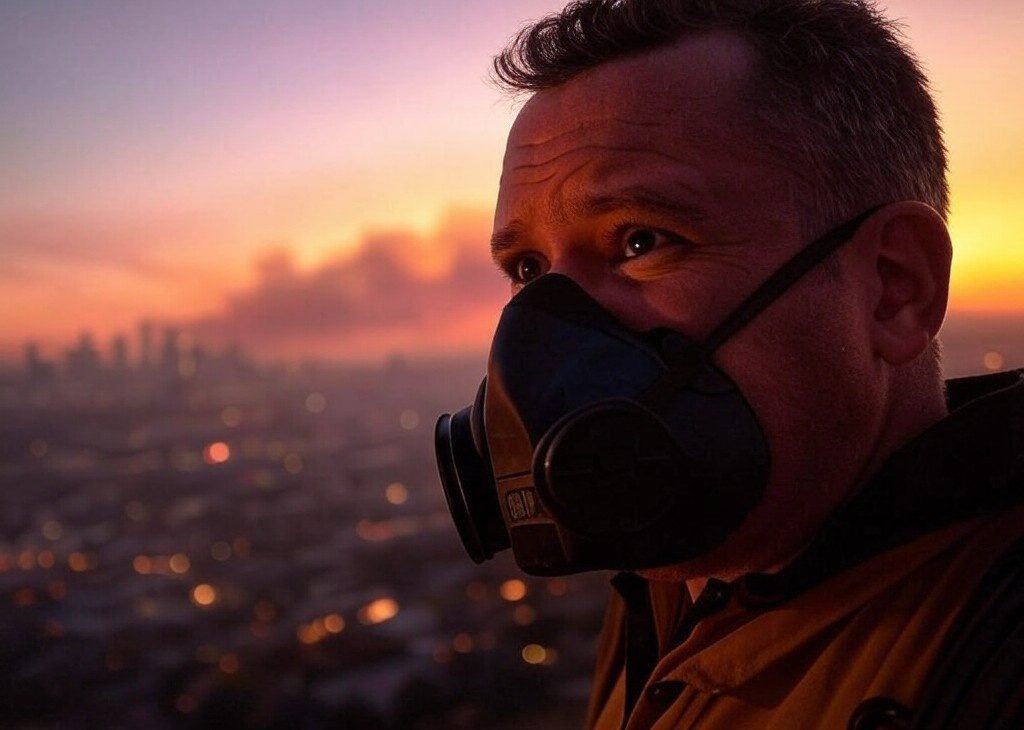The Hidden Dangers of Wildfires on Food Safety and Public Health
As wildfires rage across California, particularly in the Los Angeles area, the consequences extend far beyond the immediate destruction of land and property. The recent Palisades Fire serves as a stark reminder of the complex interplay between natural disasters and public health, particularly concerning food safety. On January 10, 2025, the smoke from these fires was visible from Santa Monica Pier, highlighting the extensive reach of the disaster. The consequences are not just local; they can impact communities thousands of miles away.
Wildfires and Their Impact on Food Safety
The United States Department of Agriculture (USDA) has issued warnings regarding the potential for wildfires to compromise the safety of food stored in homes. Smoke plumes can rise up to 14 miles (23 kilometers) into the atmosphere, carrying harmful contaminants far from the source of the fire. As reported by Los Angeles County Sheriff Robert Luna, the aftermath of these blazes can seem akin to “the aftermath of an atomic bomb,” with destruction evident in both landscapes and air quality.
Food poisoning, a serious health risk, often arises when food or drinks become contaminated with pathogens such as bacteria and viruses. Wildfires introduce a myriad of contaminants into the atmosphere, including smoke fumes, heat, and chemical residues from firefighting efforts. According to Mark Davidson, Manager of Marketing and Technical Materials at Camfil, “Wildfires primarily affect the west coast and northern states in the United States. However, the smoke from these fires can be carried far and wide by the wind.”
The Toxic Nature of Wildfire Smoke
Wildfire smoke poses unique dangers as it is more toxic than typical air pollution. This is primarily due to the burning of various materials, including vegetation and synthetic substances like plastics and treated asphalt. In Los Angeles, fine particulate matter (PM2.5) reached dangerous levels, peaking at 40-100 micrograms per cubic meter—between eight and twenty times the maximum recommended levels set by the World Health Organization. More than 90% of wildfire smoke is composed of PM2.5 particles, which are smaller than 2.5 microns and can travel long distances, infiltrating homes and contaminating food packaging.
As a precaution, the Los Angeles Department of Public Health recommends discarding plastic water bottles that have been exposed to ash, as particles can infiltrate caps. Food items that have been exposed to ash and are not stored in waterproof or airtight containers should also be discarded. However, sealed glass or metal jars can often be cleaned and reused.
The Role of Chemical Contaminants in Food Safety
Wildfires not only release harmful gases like nitrogen oxides and carcinogenic polycyclic aromatic hydrocarbons (PAHs) but also introduce chemical contaminants into households. These contaminants can accumulate on food and food surfaces, particularly when smoke infiltrates indoor spaces through HVAC systems lacking adequate filtration. Camfil advises employing “a combination of carbon filtration to control odor and gaseous contaminants and high-efficiency air filters on PM2.5 particles” to mitigate these risks.
Another significant concern arises from the chemicals used in firefighting efforts, such as fire retardants like Phos-Chek. These substances can release toxic metals into the environment, with substantial quantities being discharged over the years. The intense heat from wildfires can also compromise the integrity of food packaging, allowing bacteria to infiltrate. Research indicates that extreme heat can activate dormant pathogens, increasing the risk of foodborne illnesses.
Microbial Risks Associated with Wildfire Smoke
Recent studies have highlighted that wildfire smoke can act as a vector for bacteria and fungi, spreading microbial life over vast distances. In a study published in the journal Ecosphere, researchers observed more than 70 different types of bacteria and fungi growing on petri dishes exposed to smoke at varying distances from a fire. The findings indicated a decrease in microbial abundance as the distance from the fire increased, raising concerns about the potential for wildfires to spread foodborne pathogens.
Moreover, certain heat-tolerant microbes are capable of surviving extreme temperatures, with some strains enduring temperatures up to 800˚C. This phenomenon raises significant concerns regarding the safety of food, particularly fresh produce and raw foods that may come into contact with contaminated air or surfaces.
Guidelines for Ensuring Food Safety After Wildfires
Barbara Brown, a food specialist at Oklahoma State University Extension, provides essential guidelines for ensuring food safety following a wildfire. She emphasizes that fresh produce, raw foods, and any open containers exposed to fumes, water, or chemicals should be discarded. Pantry staples like flour, sugar, spices, and items in non-airtight containers are also at risk and should be thrown out. If there is a power outage, perishable items such as meat, seafood, dairy products, and prepared foods must be discarded if kept above 40°F for over two hours.
Power outages commonly accompany wildfires, leading to fridges and freezers filled with spoiled food. While some may consider cleaning out their refrigerators, experts warn that food spoiled for even a few days can leave lingering contamination. In extreme cases, it may be safer to replace the refrigerator entirely.
The Broader Implications of Wildfires on Public Health
As of mid-January 2025, the number of people displaced by the wildfires in Los Angeles County has approached 200,000, and hundreds of thousands have lost power. With multiple active wildfires, including the Palisades and Eaton fires, California is witnessing some of the most devastating blazes in its history. This situation serves as a critical reminder of the far-reaching impacts of climate-related disasters, emphasizing the fragile nature of our food systems and the urgent need for effective disaster preparedness.
The connection between environmental disasters and food safety is profound, necessitating immediate action and long-term solutions to safeguard public health. As communities grapple with the aftermath of wildfires, it is imperative to prioritize food safety measures and enhance awareness regarding the risks associated with wildfire smoke and chemical contaminants.
Conclusion
The devastating wildfires in California have underscored the need for heightened awareness regarding the impact of such disasters on food safety and public health. The smoke and chemicals released during these events pose significant risks, not only to those living near the fires but to communities far removed from the immediate danger. Understanding the potential for contamination and taking proactive measures to safeguard food are essential steps for individuals and families in the wake of wildfires. As climate change continues to exacerbate the frequency and severity of wildfires, it is crucial to advocate for robust disaster preparedness and public health initiatives that prioritize food safety in vulnerable communities.





